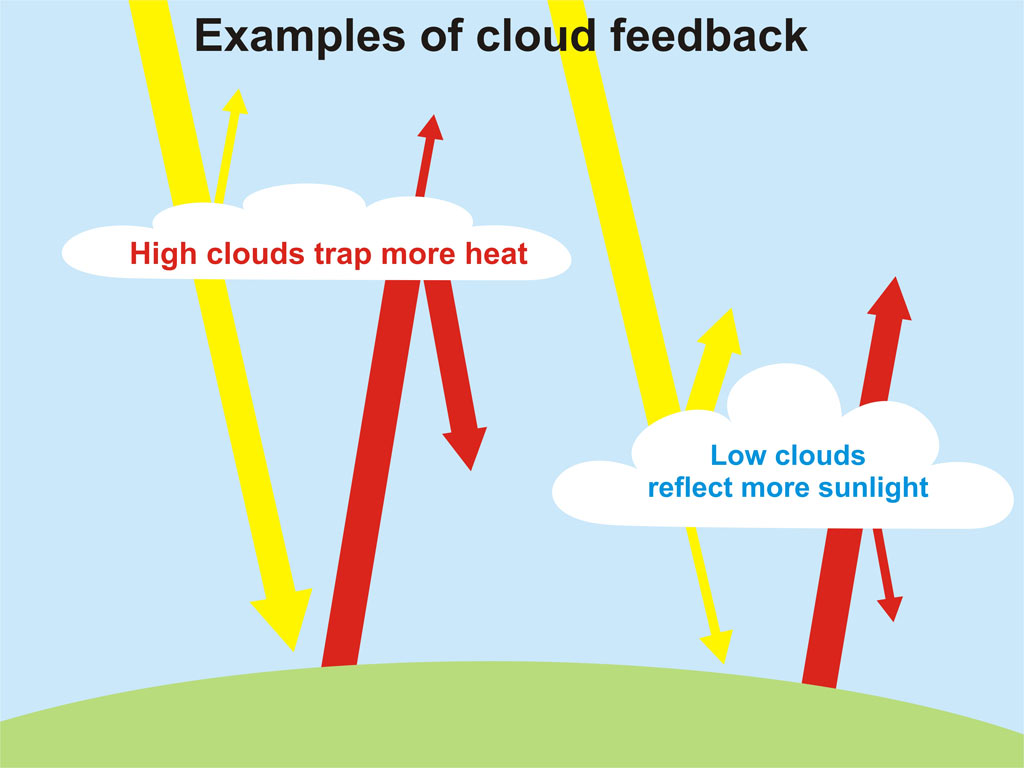By John Schwartz, The New York Times, April 7, 2016
The computer models that predict climate change may be overestimating the cooling power of clouds, new research suggests. If the findings are borne out by further research, it suggests that making progress against global warming will be even harder.
The new paper, in the journal Science, focuses on what are known as mixed-phase clouds, which are found around the world and contain both cooled water and ice crystals.
The balance of water and ice in clouds affects the impact that carbon dioxide levels have on atmospheric temperatures, a factor known as equilibrium climate sensitivity. A higher sensitivity would mean that carbon dioxide levels would cause more warming than previously thought.
Using data from instruments aboard the Calipso satellite, which monitors clouds and particles suspended in the atmosphere, the researchers determined that mixed-phase clouds contain more water and less ice than expected.
Water droplets reflect more solar radiation back into the sky than ice crystals do. As the atmosphere warms, clouds tend to have more water and less ice in them, and the more watery clouds prevent solar radiation from reaching the earth.
Warming is slowed.
With less ice in the mix to start, however, there is less capacity for water to replace ice, said Ivy Tan, an author of the paper and a graduate student at the department of geology and geophysics at Yale University. The result, she said, is more warming.
Other recent studies have suggested that climate models may not be accurately assessing the balance of water and ice in clouds in some circumstances.
The new paper suggests the effects of a flaw in the model could be serious: Based on its analysis of one model of climate change, the cloud error could mean an additional 1.3 degrees Celsius of warming than expected.
Negotiators at last year’s climate talks in Paris approved a target of keeping temperatures from rising by more than 1.5 degrees Celsius over average temperatures in the preindustrial era. The Intergovernmental Panel on Climate Change has said that keeping global average temperatures from rising by more than 2 degrees Celsius (3.6 degrees Fahrenheit) could prevent some of the disastrous effects of climate change from occurring.
The new paper, then, if proved correct, would narrow the range left for the climate panel’s goal to 0.7 degree, and the Paris target to just 0.2 degree Celsius.
“Unfortunately, it means staying below 2 degrees is going to be even harder,” said Trude Storelvmo, an atmospheric scientist and another author of the paper, and an associate professor in the Yale department of geology and geophysics. “We have to emit even less CO2 to stay below those limits.”
Ms. Tan who is a student of Dr. Storelvmo, warned that focusing too much on the study's figure of 1.3 degrees would be a mistake because repeating the study with other climate models can lead to different results.
The 1.3 degree figure, she said, "must be taken with a grain of salt."
"Every model will react differently. It could be higher. It could be lower" than 1.3 degree, she said. "The point is, it is going to result in signficant warming."

No comments:
Post a Comment